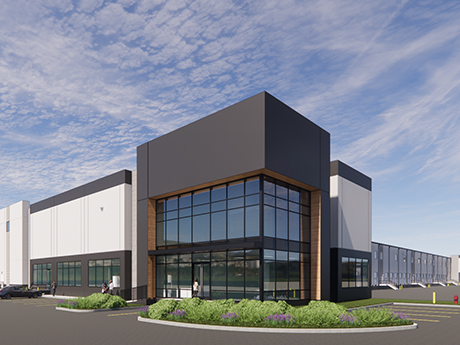By Taylor Williams
The meteoric rise of industrial real estate over the past decade will forever stand as one of the remarkable growth stories in the annals of commercial real estate, a quasi-rags-to-riches tale of an asset class that has become a preferred use for highly valuable sites and penetrated the portfolios of institutional-grade investors around the country.
But after surging to all-time highs in the immediate post-COVID era, industrial rents have moderated in most major markets. Slowing rent growth has coincided almost perfectly with interest rate hikes, all while land and construction costs have continued to do what they always do: go up.
For these reasons, industrial developers, who still overwhelmingly build on spec, tend to need a little more help these days than they did in recent years. Or in some cases, these developers may be perfectly well-capitalized to acquire land, secure financing and deliver buildings, but simply aren’t motivated to do so in the current financial environment.
Enter incentives — of both the tangible and intangible variety — as the missing link that could mean the difference between a project being shelved or delayed and being executed. Incentives can take many forms, from tax breaks granted by municipalities in exchange for job creation to discounted loan terms for promises to implement eco-friendly initiatives.
But in the cost-cutting absence of incentives, developers must either take on heavier debt loads or relinquish greater portions of equity in their projects. For some, that prospect, paired with diminished rents and higher barriers to execution, can be sufficient to kill a project in the underwriting stages.
Such dilemmas were touched on at the inaugural InterFace Houston Industrial conference in early August. Held at the Houston Racquet Club and coming on the heels of a similar event covering the Houston retail market, the event drew more than 150 commercial real estate professionals throughout the area in its debut.
Warren Hitchcock, managing director at Northmarq’s Houston office, first spoke to this trend via anecdotal evidence of an industrial project in which his company is involved.
“We’re doing an industrial deal right now in a county that’s giving a tax abatement for the first two years until the building is occupied,” Hitchcock said. “They’re recognizing that spec is how developers are developing and that it’s important to give them some help.“
Ryan Watson, first vice president of debt and structured finance at CBRE’s Houston office, quickly concurred with that observation. He identified the importance of incentives in both broad and highly specific terms by referencing a popular Texas vehicle — the municipal utility district (MUD) — which exists to help developers offset indirect costs of construction such as infrastructural improvements.
“Most [industrial] developments we’re seeing right now are getting some type of help, whether from the state or a MUD, in order to move forward,” Watson said. “Construction costs are just so high right now; then you add on the layer of higher debt costs, and [the result is that] debt service ratios are getting constrained.”
“That means that more equity has to come into these projects,” he continued. “So there are some developers that are throwing up their hands and saying, ‘unless someone can give me some help somewhere, there’s no reason for me to take the risk to do this new project.’”
Channeling his clients’ mindset, Watson pointed out that alternate securities that carry significantly less risk — in some cases none at all — can appeal to real estate developers in lieu of their traditional business plan. For it’s not just financing new projects that carries risk; entitlement and permitting processes can be costly and time-consuming (and have no guarantees of success).
Meanwhile, some banks are offering investment vehicles with comfortable, if not glamorous returns. And despite its high rate of volatility over the past 18 or so months, the 10-Year Treasury yield — the completely risk-free alternative to commercial investment — is still paying close to 4 percent.
“Developers can just easily throw their funds into a money market account at 5.5 percent, risk-free, and if there is some sort of stumbling in the economy, then they can buy the project at a lower cost than what they would have built it for,” Watson explained.
Hitchcock said later in the discussion that this type of thinking is becoming more prevalent throughout the capital stack on industrial deals, for debt and equity sources alike.
“We’re seeing a sort of reframing on where each capital [source] wants to sit within the stack,” he said. “Everyone’s trying to be more conservative today. The equity [source] that would have been the last-dollar investor wants a mezzanine or preferred equity position today. Preferred equity wants to be a in lower-leverage or possibly a construction position.“
“Banks, which typically would be at 70 or 75 percent loan-to-cost on new construction, are down to 55 or 60 percent,” he continued. “So everybody’s come down on the leverage and risk curves, and they’re haven’t been a lot of new entrants to fill those gaps, which is part of the problem in the marketplace.”
Multiple panelists pointed out that they’re seeing developers still willing to take risk and pursue new projects if they can acquire land at what they consider to be a low basis. Houston’s lack of zoning can both facilitate or hinder this requirement, as developers may be able to find infill sites that could be exceptional last-mile locations for industrial facilities but will likely have to pay a premium for that dirt. More often than not, the cost barriers to entry win out, and developers end up targeting sites in more suburban submarkets.


